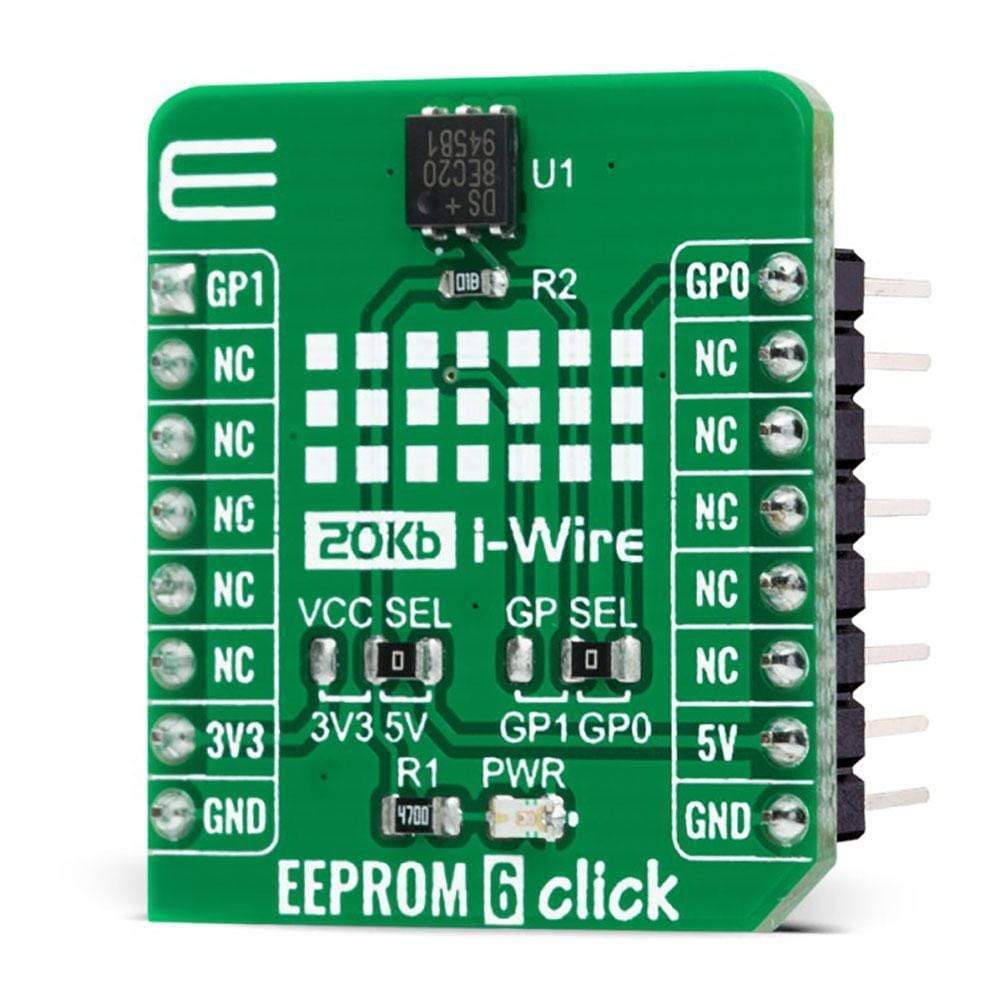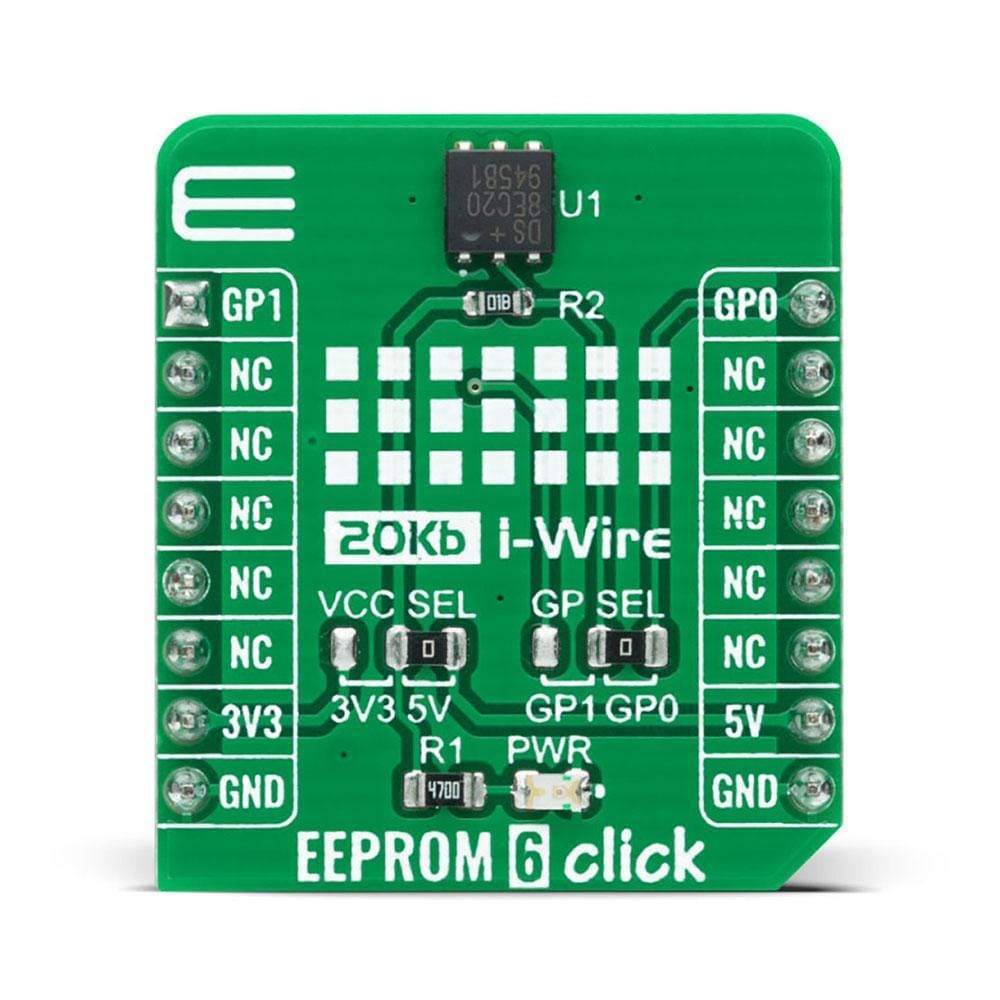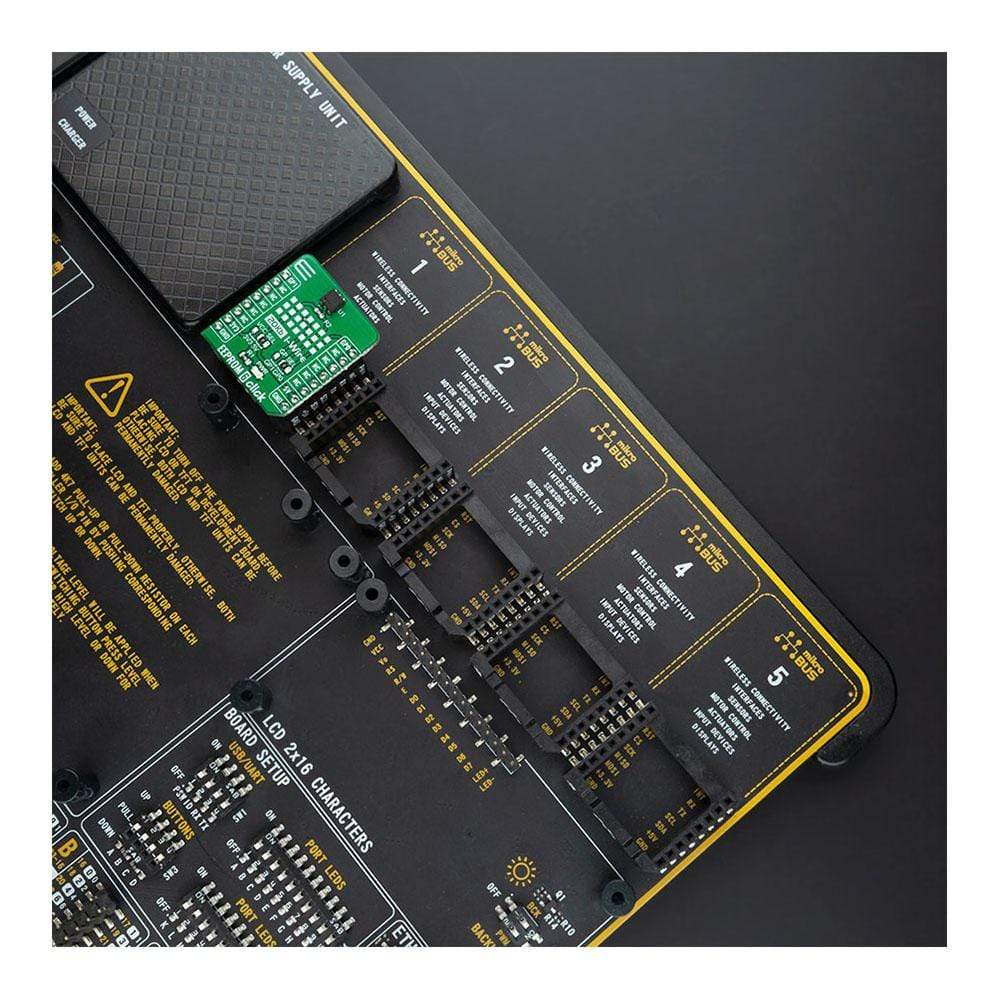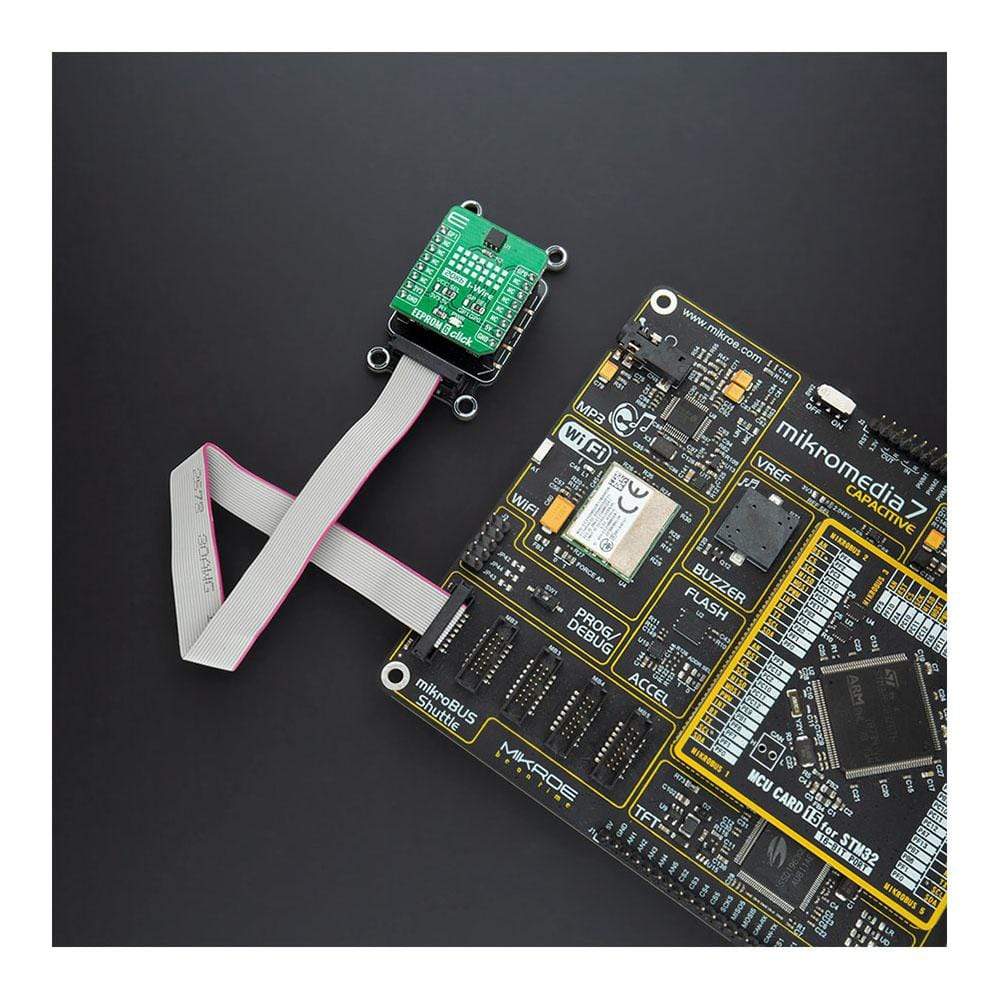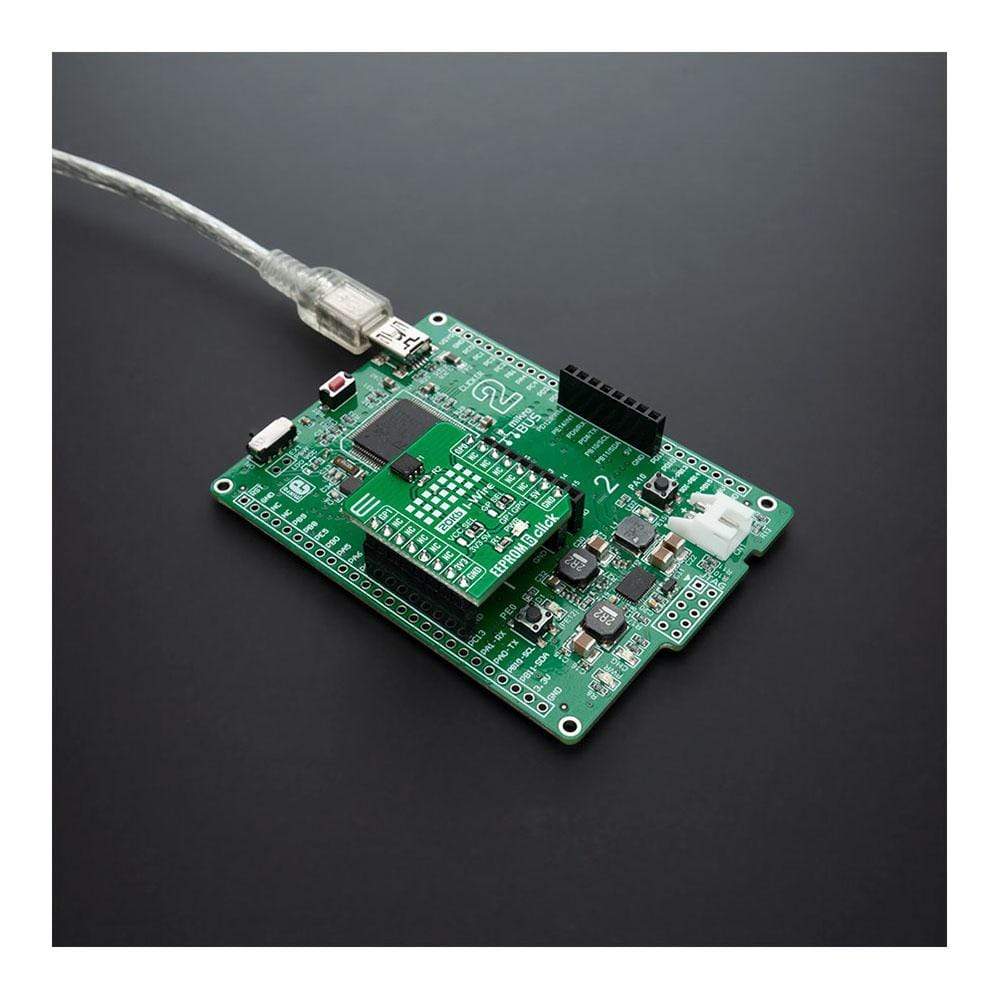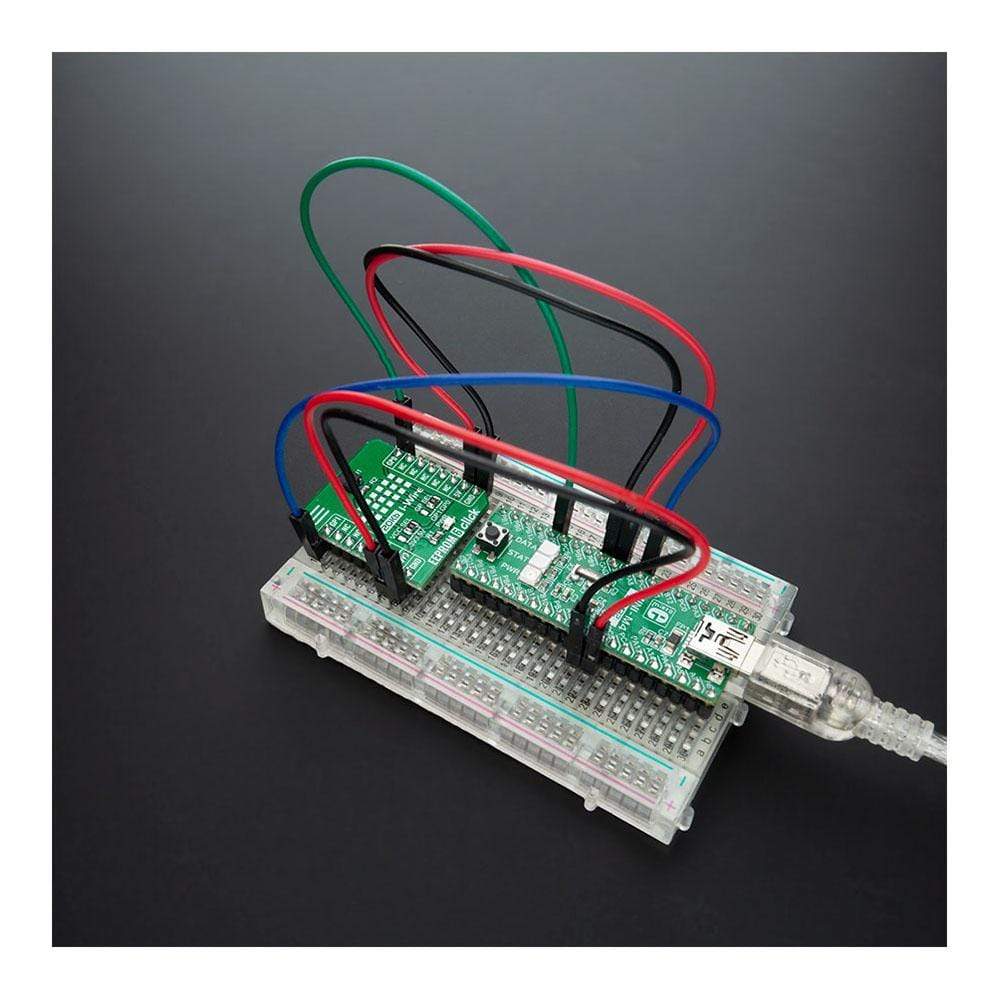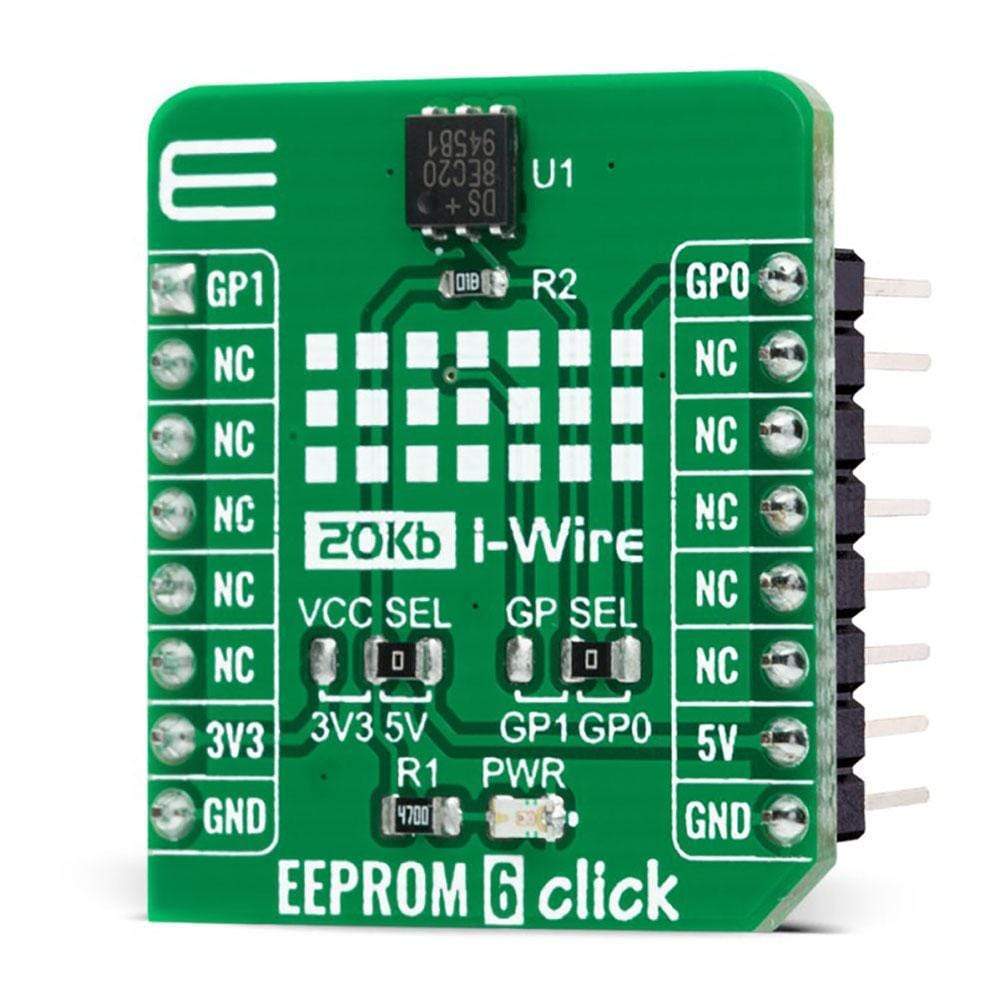
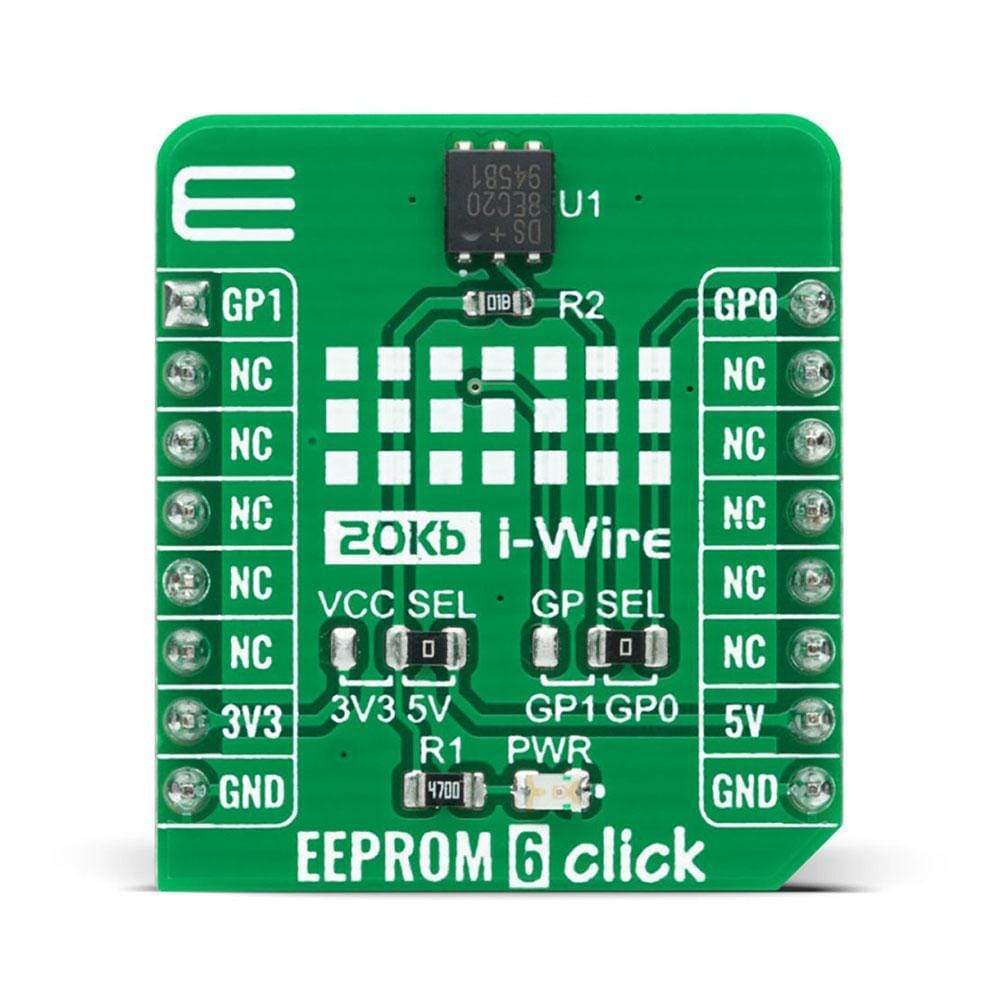
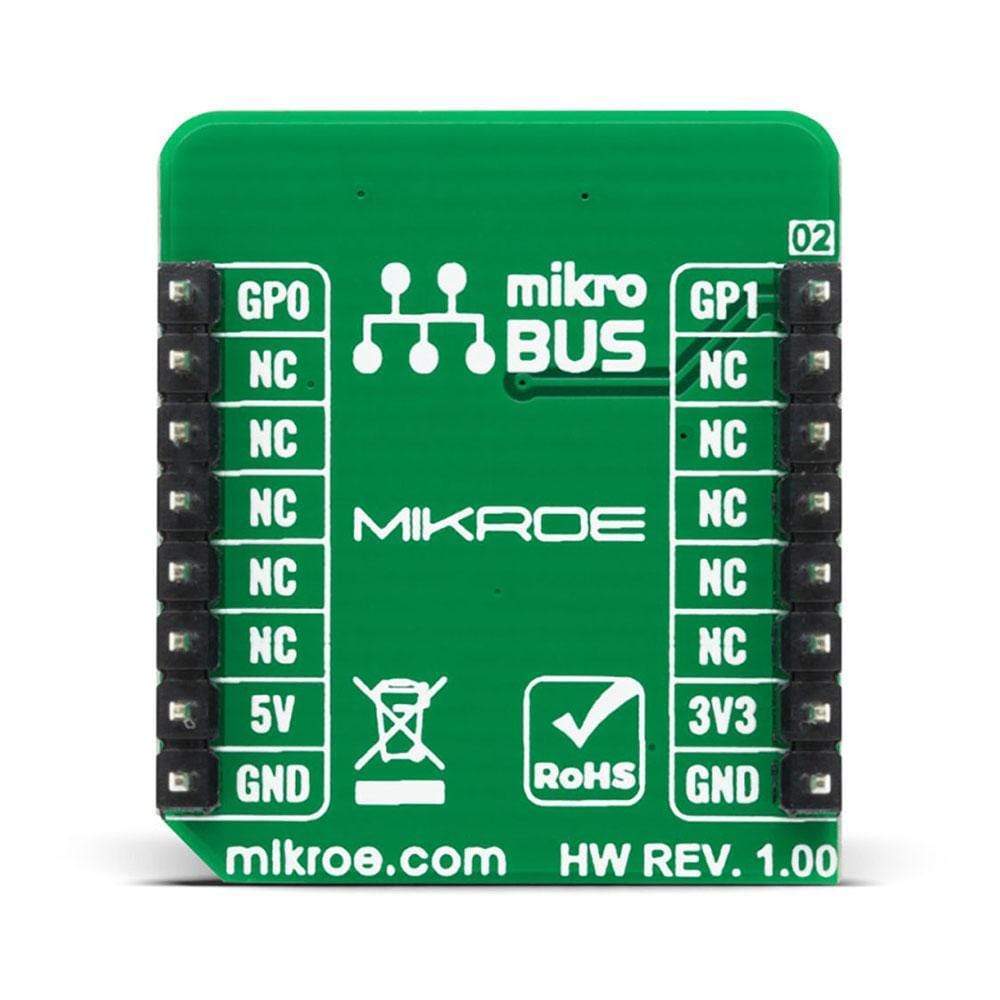
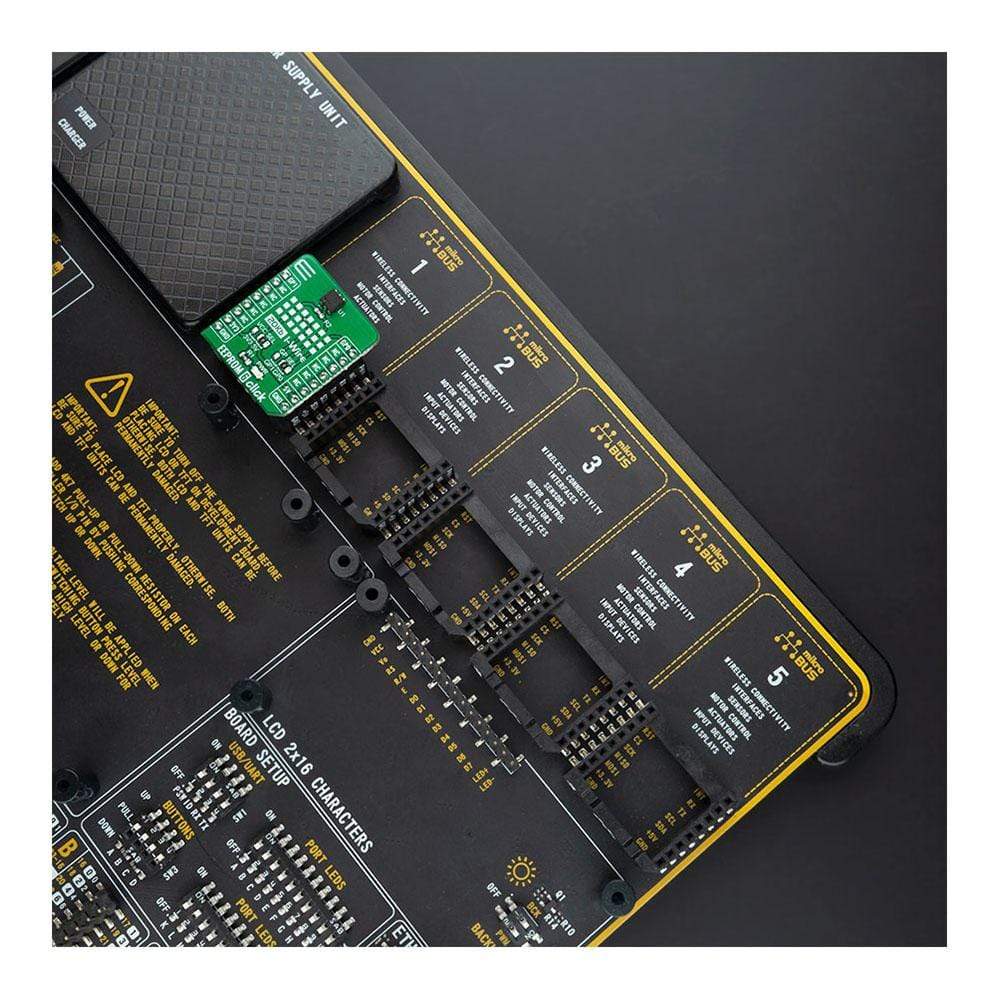
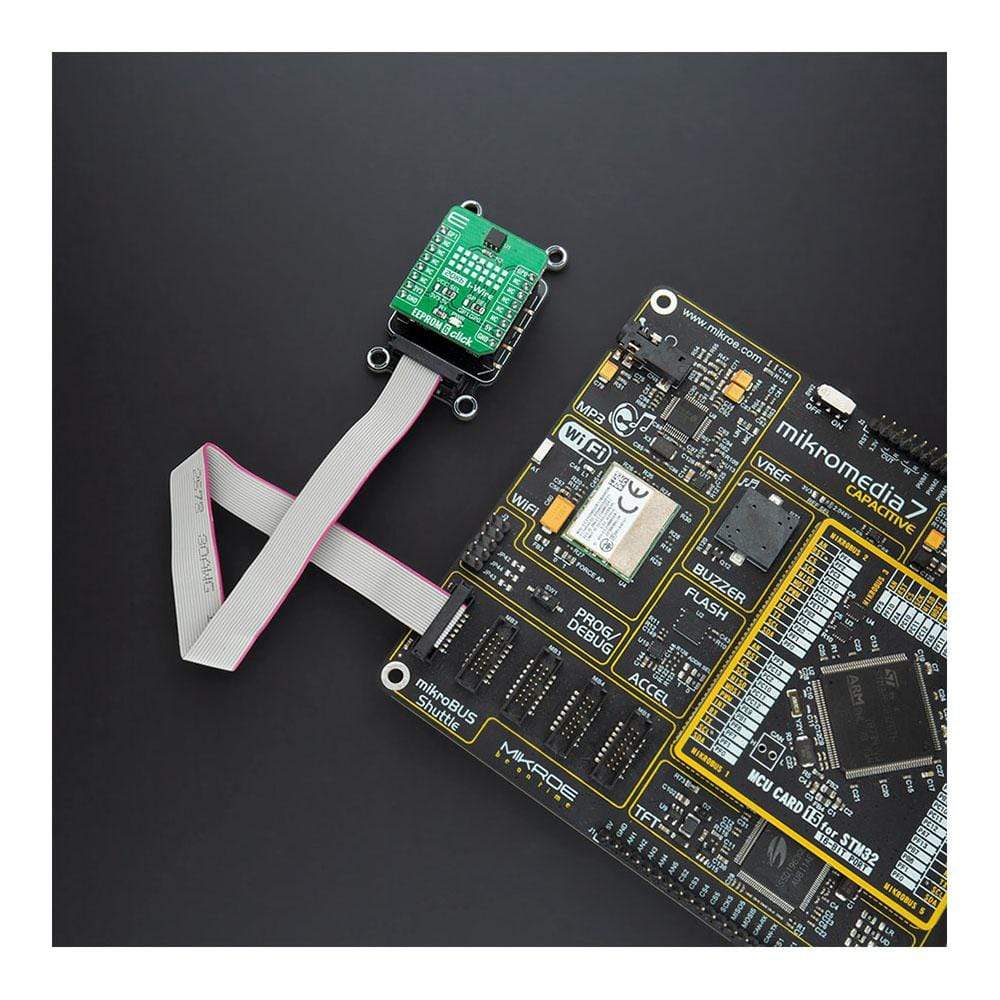
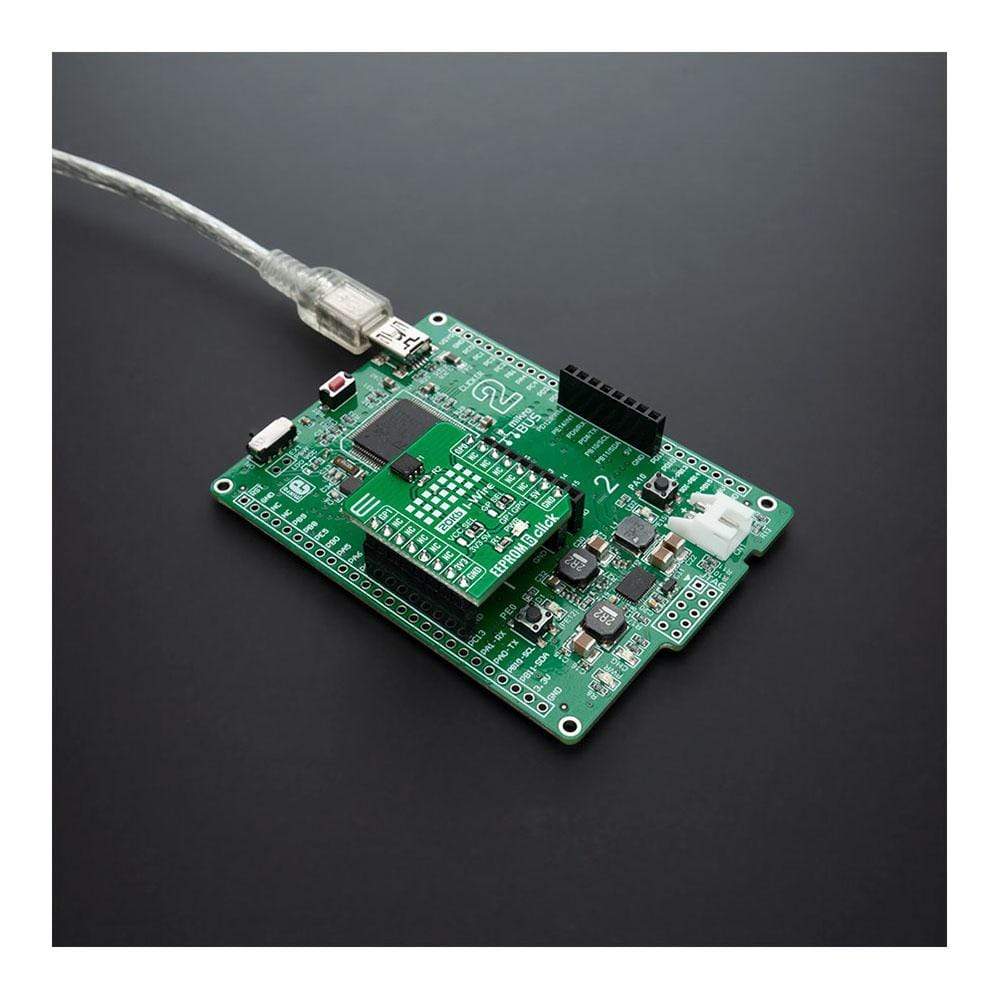
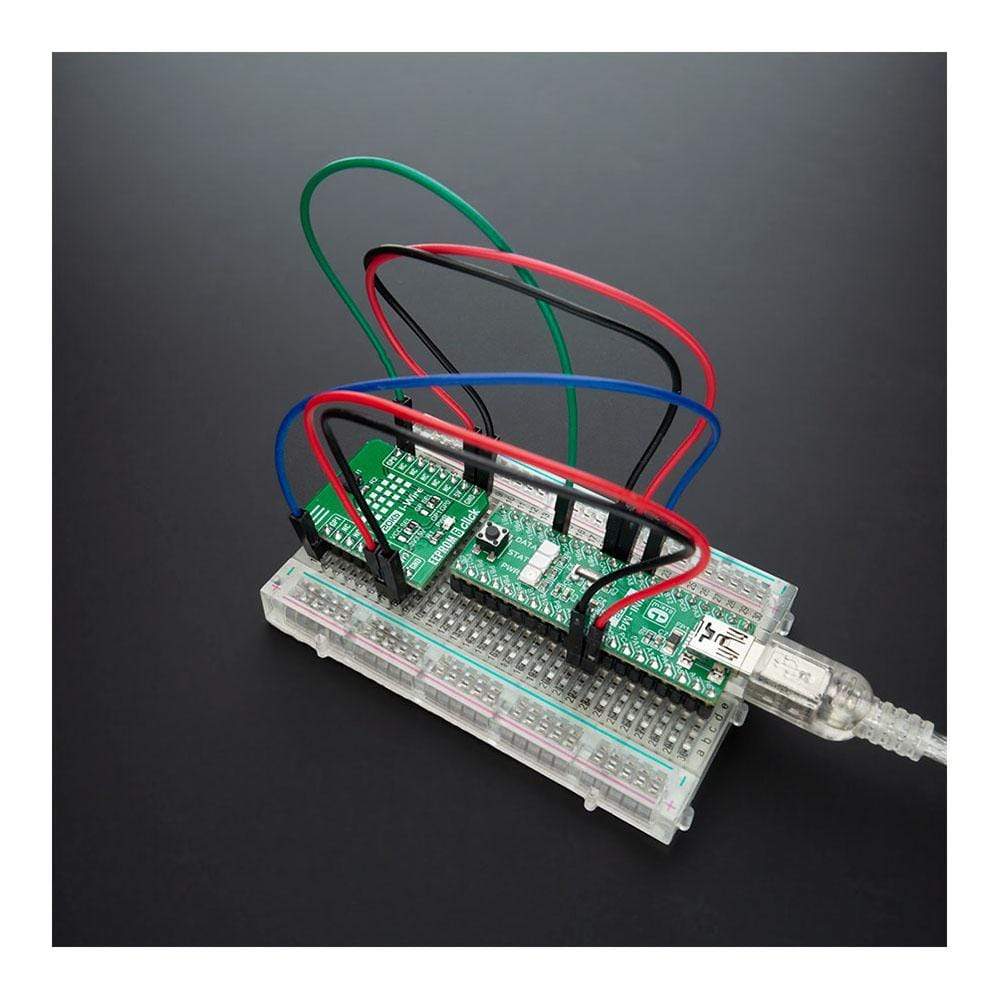
Overview
The EEPROM 6 Click Board™ is a compact add-on board that contains a serial EEPROM memory that operates from the 1-Wire interface. This board features the DS28EC20, a 20480-bit EEPROM organized as 80 memory pages of 256 bits each from Maxim Integrated. As a specific feature, blocks of eight memory pages can be write-protected or put in the “EPROM-Emulation” Mode, where bits can only be changed from a 1 to a 0 state. It communicates with MCU at 15.4kbps or 90kbps over the 1-Wire protocol and has a 64-bit registration number that ensures error-free device selection. This Click Board™ is suitable for applications like device authentication, data for self-configuration of central office switches, wireless base stations, or other modular-based rack systems.
The EEPROM 6 Click Board™ is supported by a mikroSDK compliant library, which includes functions that simplify software development. This Click Board™ comes as a fully tested product, ready to be used on a system equipped with the mikroBUS™ socket.
Downloads
La carte Click Board™ EEPROM 6 est une carte complémentaire compacte qui contient une mémoire EEPROM série qui fonctionne à partir de l'interface 1-Wire. Cette carte comprend le DS28EC20, une EEPROM de 20 480 bits organisée en 80 pages de mémoire de 256 bits chacune de Maxim Integrated. En tant que caractéristique spécifique, des blocs de huit pages de mémoire peuvent être protégés en écriture ou placés en mode « émulation EPROM », où les bits ne peuvent être modifiés que de l'état 1 à l'état 0. Elle communique avec le MCU à 15,4 kbps ou 90 kbps via le protocole 1-Wire et dispose d'un numéro d'enregistrement de 64 bits qui garantit une sélection d'appareil sans erreur. Cette carte Click Board™ convient aux applications telles que l'authentification d'appareils, les données pour l'auto-configuration des commutateurs de central téléphonique, les stations de base sans fil ou d'autres systèmes de rack modulaires.
La carte Click Board™ EEPROM 6 est supportée par une bibliothèque compatible mikroSDK, qui comprend des fonctions qui simplifient le développement logiciel. Cette carte Click Board™ est un produit entièrement testé, prêt à être utilisé sur un système équipé du socket mikroBUS™.
| General Information | |
|---|---|
Part Number (SKU) |
MIKROE-4296
|
Manufacturer |
|
| Physical and Mechanical | |
Weight |
0.018 kg
|
| Other | |
Country of Origin |
|
HS Code Customs Tariff code
|
|
EAN |
8606027380747
|
Warranty |
|
Frequently Asked Questions
Have a Question?
Be the first to ask a question about this.

